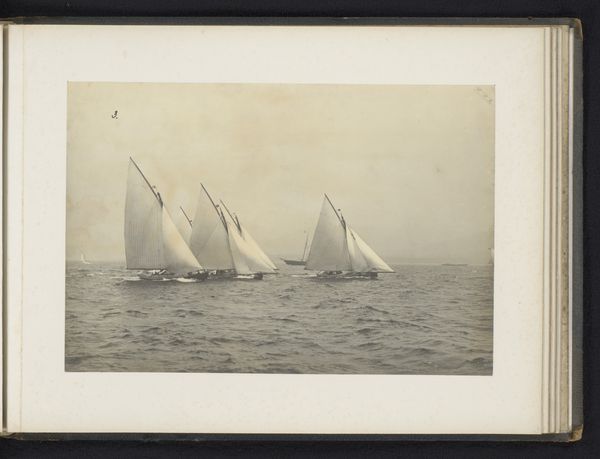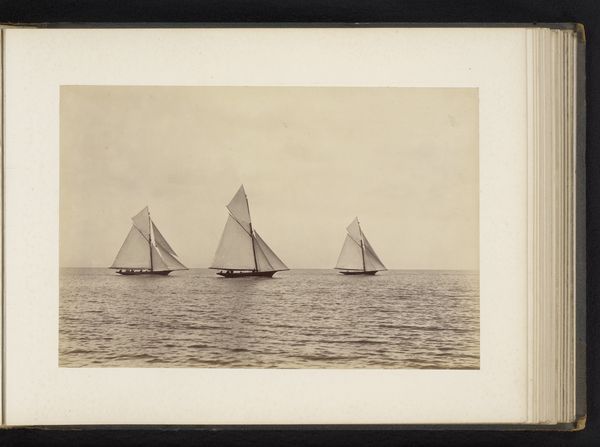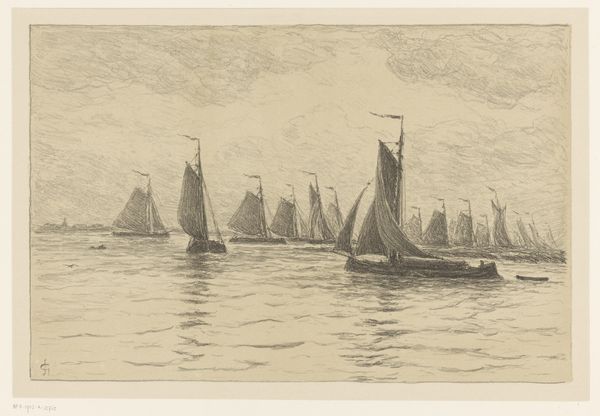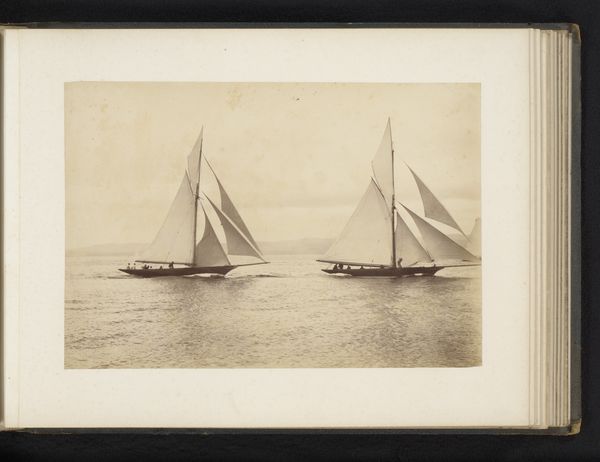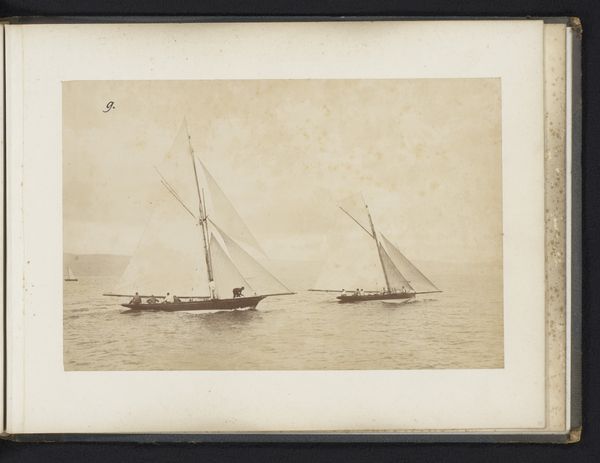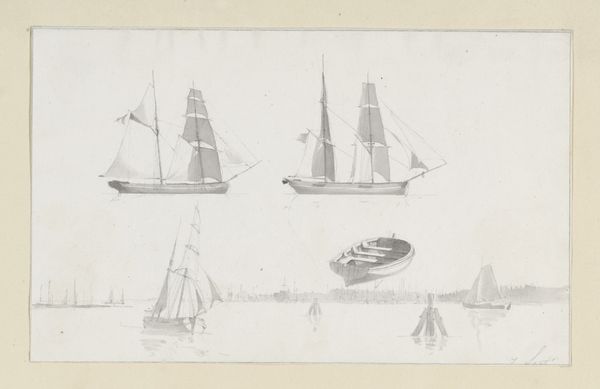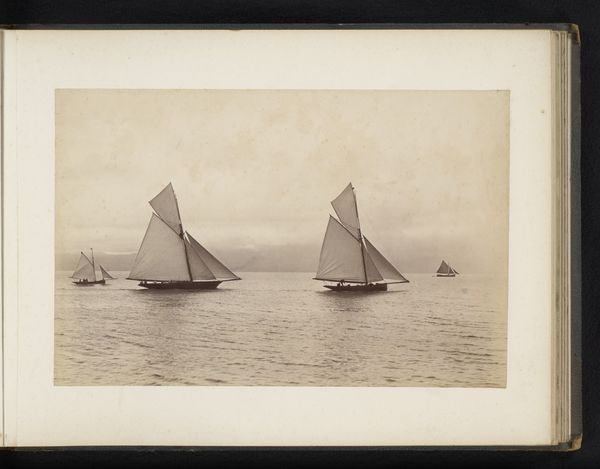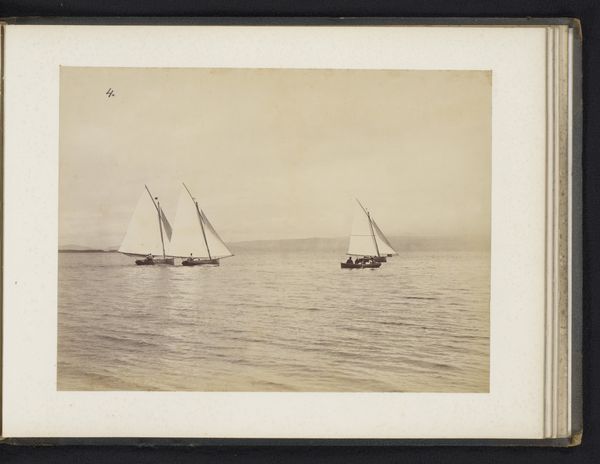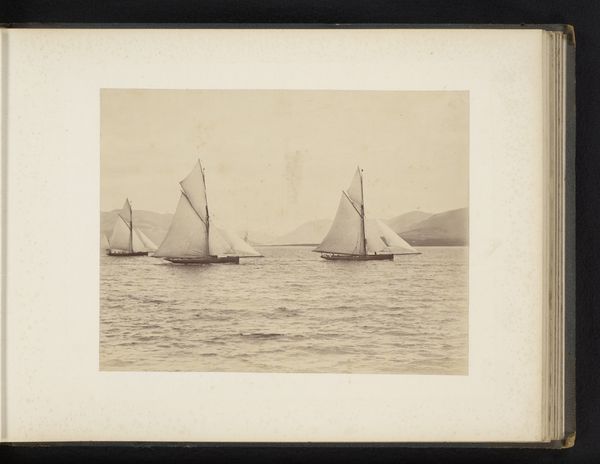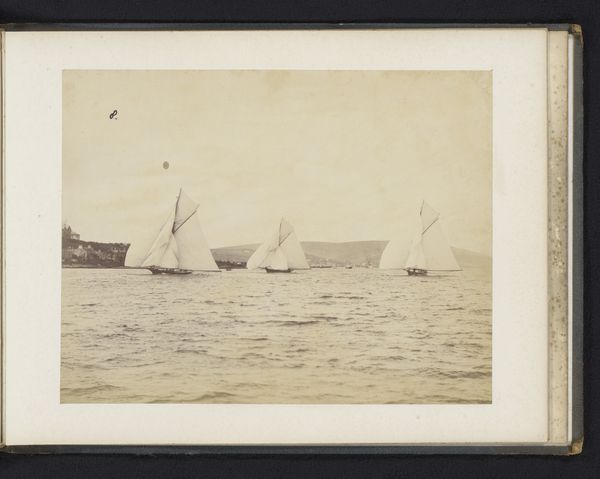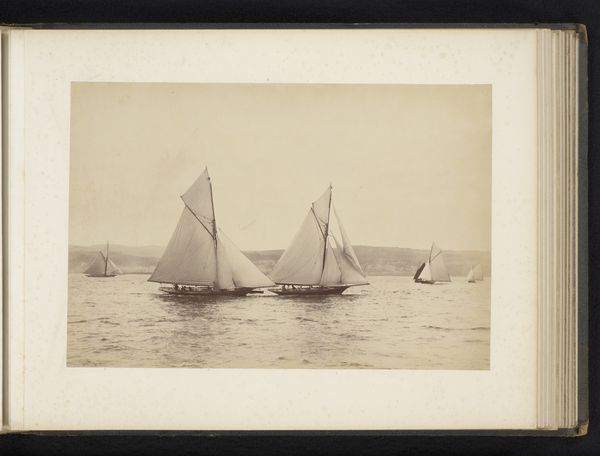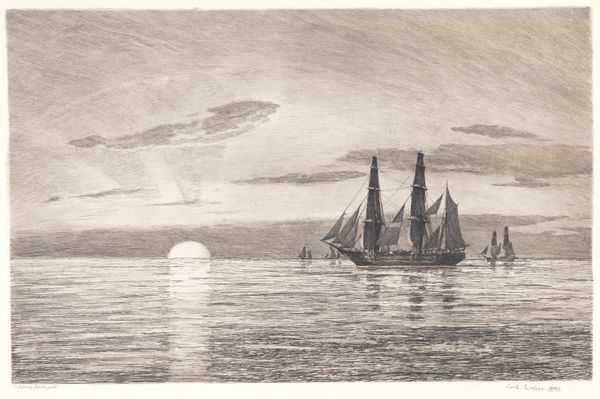
photography, albumen-print
#
still-life-photography
#
lake
#
landscape
#
photography
#
historical photography
#
albumen-print
#
realism
Dimensions: height 160 mm, width 240 mm
Copyright: Rijks Museum: Open Domain
Editor: This albumen print, titled "Zeilschepen op de Friese meren," so, "Sailing Ships on the Frisian Lakes," captures a serene, almost dreamlike moment with sailboats on a calm sea; it must be from before 1915. I'm struck by the quiet stillness it evokes. How would you interpret this photograph, considering its historical context? Curator: It is very tempting to see photographs such as this one through a lens of national pride. Albumen prints like these gained popularity, reflecting an era when photography was becoming increasingly accessible to the public. Beyond just documentation, it played a role in constructing and reinforcing a national identity. The very act of photographing and circulating images of serene Dutch landscapes featuring locals enjoying leisure activities helps construct a certain idea of Dutchness that we, today, are accustomed to. Don't you think? Editor: That's a fascinating point! I hadn't thought about it as actively contributing to a sense of national identity. The framing within a frame created by the circular inset image does almost act like a little promotional picture. Curator: Indeed, this era also saw the rise of tourism. These images could have been circulated to encourage travelers, which brings to light interesting considerations around what aspects of their cultural and natural environment people chose to showcase and commemorate, as well as what they were consciously or unconsciously omitting. Editor: It’s like a carefully curated snapshot of Dutch life meant for public consumption! The inclusion of the Friese Meren might be deliberate—framing it as a peaceful getaway from the industrialized cities, almost an advertisement of the area. It gives the piece new meaning. Curator: Precisely. And thinking about photography's democratizing effect on visual representation at this time certainly prompts new questions. The rise of vernacular photography meant an increased volume and variety of imagery representing national culture was created and dispersed. What do you think this increase could tell us? Editor: It gives people a chance to visually control and interpret the reality around them. That feels so valuable and empowering, particularly considering what we were saying about ideas around identity. This has certainly deepened my understanding. Curator: Mine as well. Examining this landscape image reveals intricate layers about social history and cultural projection.
Comments
No comments
Be the first to comment and join the conversation on the ultimate creative platform.

